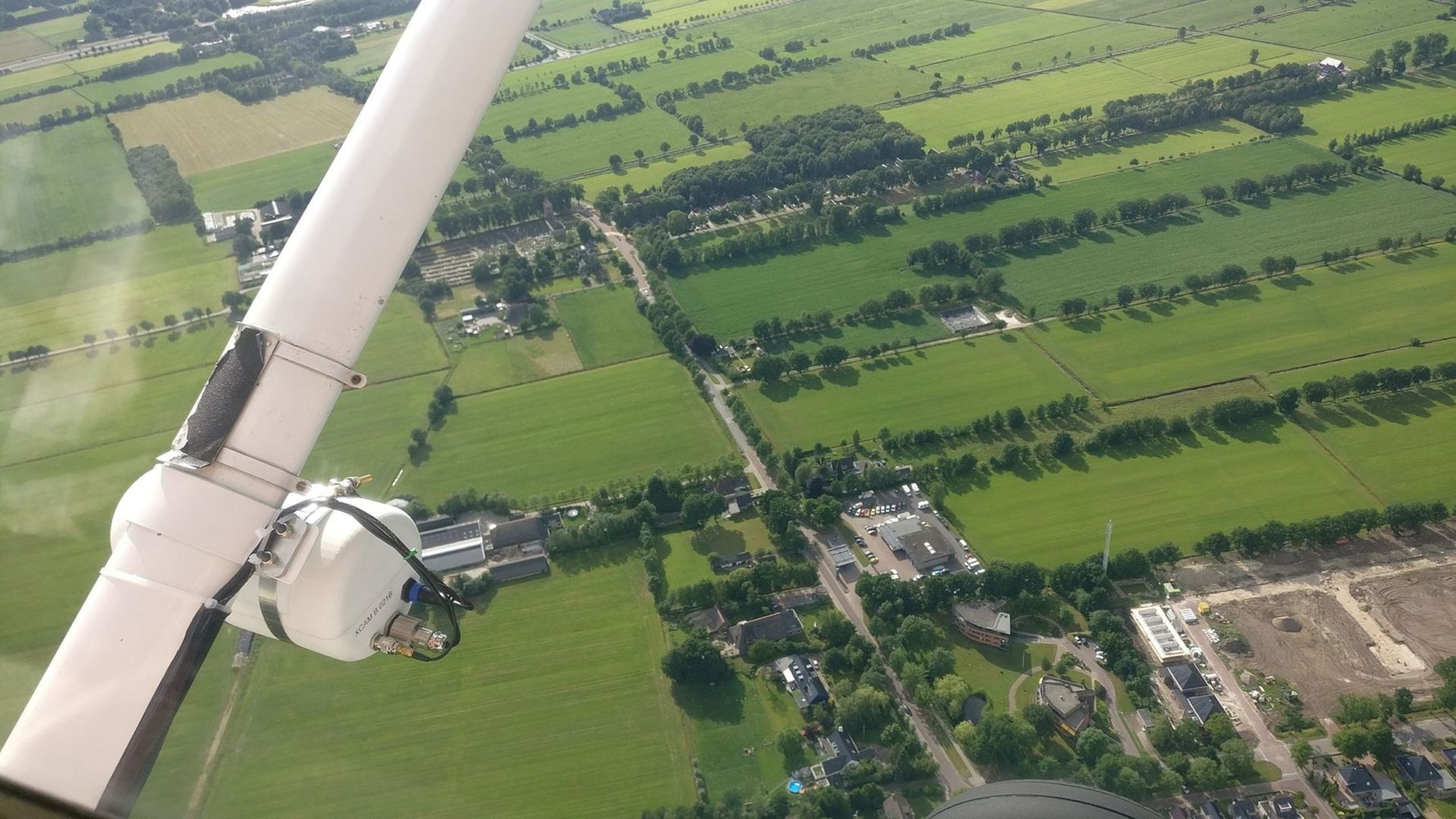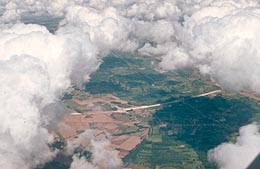- Home
- Prospecting
- A day in the air
- In flight
The line of a motorway under construction appears through a hole in the clouds. Photographing current archaeological excavations is becoming very difficult.
8:20 am: Takeoff
We take off toward the east, despite the persistent flog. The weather is right for observing, against the light, the dark patches left by vanished dwellings (maculiform clues) Even if the photos turn out mediocre, they will be more acceptable in infrared.
8:50 am
The good weather is here. Now we will keep the sun at our back as we look for pedographic clues.
Unfortunately, only a few are really visible, because the fields have already been harrowed. The wind picks up, the sun is shining, and the ground abruptly starts to dry. It's the perfect moment to locate hygrographic clues.
11:00 am
The ground is dry and this type of clue has disappeared. Luckily, the crops are starting to sprout, and we will now turn our attention towards a few rare green fields, since phytographic clues éare very much in evidence. However, cumulus clouds are starting to build up, and things are getting turbulent. Large shadows are moving across the ground, seriously interrupting our perception of shapes. We're going to have to give up on the idea of photographing any excavations sites.
Back on the ground
As soon as we land, we check the weather to see if the clouds are going to disappear. They're not, and we learn that a strong disturbance is forecast for tomorrow night. As we know, this is often preceded by beautiful weather, very luminous and with excellent visibility.
We plan for a new flyover, essentially to photograph the anomalies that are starting to appear in the crops, some archaeological digs, and some landscapes, because we will be able to fly at an altitude of between 800 and 1,000 meters.
In the office
It's time to listen to the tape recorder, write up the flight log, and attempt to located the sites that we observed on detailed 1/25,000 scale maps while waiting for the photos to be developed. We have a few hours left to go out and carry out some initial ground inspections. Cumulus clouds do not interfere with us taking these types of photos at all.
Ground-level photo of a small Gallo-Roman villa that can easily be seen in the fields at Huchenneville (Somme).


